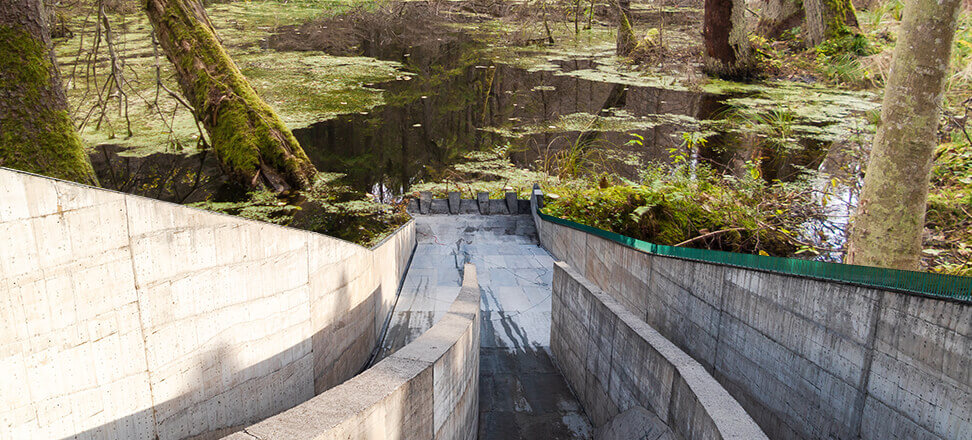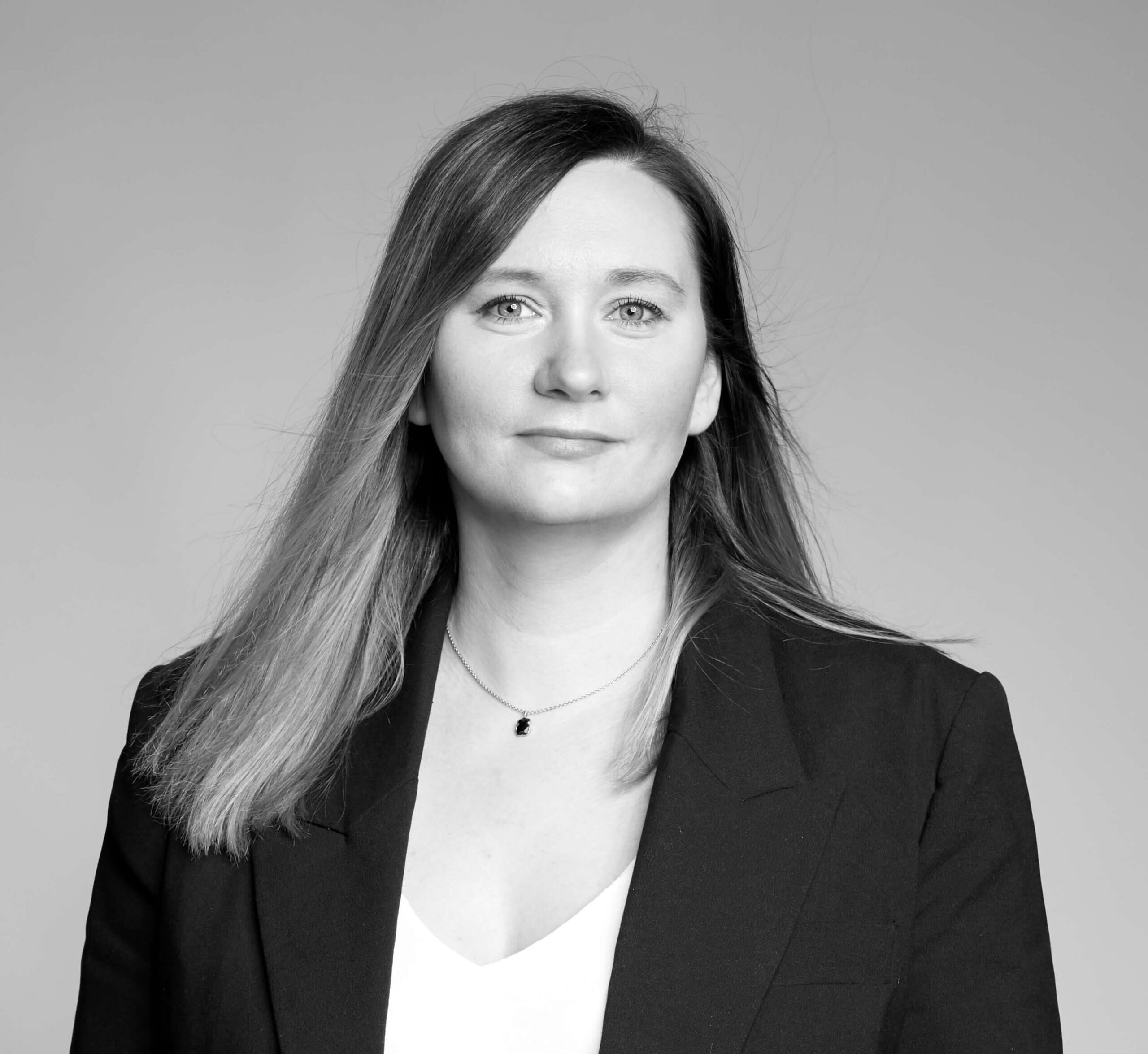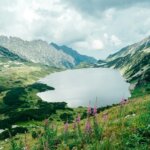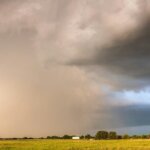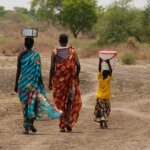Drought, flooding, shortages, flooding are phenomena we are facing more and more often. In addition to their increasing frequency of occurrence, they also share a common means of mitigation – retention. The term is extremely capacious and includes both activities related to building retention basins, catching rainwater and restoring wetlands, as well as changing the way agriculture is carried out. We have many shades of retention.
I talked to dr. hab. Mateusz Grygoruk, prof. WULS-SGGW and Wojciech Skowyrski, Deputy President of Polish Waters for Flood and Drought Protection.
The conversation with Mateusz Grygoruk concerns ordinary water retention and ways to retain water in Poland.
Marta Saracyn: We have problems with water in Poland. No one argues with this fact anymore. Against the backdrop of Europe, these shortages are visible. More and more often we notice problems with its functionality for mobile devices and for consumption. How do you think retention should be shaped to increase our resources?
Matthew Grygoruk: I would take two paths. First of all, I would tell people that all the technical infrastructure, which is oriented towards the preparation or delivery of water resources, will be completely sufficient for us in the long run. Especially since it is burdened with gigantic operating costs. On the other hand, if we are talking about action, I would definitely raise issues related to reducing water balance losses. Polish rivers are mostly regulated and effectively drain groundwater. Our situation in this regard is peculiar in that groundwater is used in excess, and these quantities are not recorded. Under ordinary water use, a user can withdraw 5 m³ of water per day per year from his well without a permit and without charge. Such wells are plentiful, and unrecorded extraction is causing a progressive decline in groundwater levels. When you add to this the straightened, de-sulphurized and dredged rivers, effectively draining Poland’s forest, urban and agricultural landscapes, it suddenly appears that a crisis in shallow groundwater resources is lurking around the corner. I would primarily look to safeguard future generations by stabilizing groundwater resources and by limiting their drainage through rivers, ditches and canals.
The second direction, after communication and recording of resources, is the renaturation of rivers and the restitution of wetlands. Where to get money for these activities? From hydrotechnical activities. I would transfer to farmers, foresters and other entities dealing with spatial development, including in cities, all the funds that we allocate from the budget today for concrete investments, which in the long term will increase the cost of their maintenance, and the benefits of their operation are, in my opinion, – paper. Funds for the renaturation of rivers and the restitution of wetlands, mainly peat bogs, will allow for the retention of huge amounts of water, increasing the pool of carbon in the soil and the stability of the landscape against the expected negative consequences of droughts and floods caused by climate change.
M. S.: What are the advantages of your proposed solutions? Why exactly would these be the best?
M. G.: It is crucial to understand that technical retention, that is, the activities of building reservoirs or hard installations, are fraught with a great many problems. Hardly anyone treats technical retention as a construction that has a lifetime. This is followed by a decapitation moment, which also has to be paid for. This is the end of the investment cycle. In contrast, with nature-based solutions, a real investment takes place. Such a strictly investment, because it, in addition to water, gives us a great many other benefits, such as carbon retention, which everyone in Europe and the world is striving for. Removal of diffuse pollutants from water, thanks to the restoration of marshy buffer zones, is another benefit that cannot be replaced by any technical measure, well, except maybe the ban on fertilizer. It seems to me that the discussion on this topic will end when people realize that this is not an alternative, that the measures called Nature Based Solutions are real investments that we have to make. Concrete solutions are mostly consumption, not investment. At this point we are delaying the necessary measures and worsening the condition of our water resources. I would only go in the direction of natural retention methods. They have no alternative to concrete levees.
M. S.: Do you see any disadvantages and barriers to such solutions?
M. G.: Barriers are created by politicians, because still most of them live under the delusion that since land reclamation and regulation of rivers helped 50 years ago, they will help today too. Years ago, land reclamation was used to take land away from nature and improve farming, because those were the priorities and opportunities. Just as it was in the newsreels. I don’t know if you’ve seen this snatching of swamp land piece by piece. Unfortunately, people think all the time that technical methods can solve all problems with water shortages. As long as we leave, as scientists and as a research community, wide room for interpretation of the results of our research, we will lag behind in improving the quality and quantity of water retention.
Green methods are all the time presented as such a decaffeinated latte. The message is that here are people sitting in the city and talking about the fact that nature must be green, but they have no idea about this nature. We forget that water is not a separate element of the environment. We are talking about the whole: water and carbon in the soil, agriculture, wastewater treatment – they are all interconnected. We have one process, and people are trying to separate everything into parts. Retention is just a component. Until we solve problems comprehensively, we will not get out of our backwardness.
I talked with Wojciech Skowyrski about the actions for retention undertaken by Polish Waters.
Marta Saracyn: We meet on a special day. Today we celebrate World Water Day. Poland is in an unfavorable situation in terms of water availability. We have few resources and we definitely need to take care of them. I would like to ask how the issues of retention and resource enhancement are handled from the perspective of the Water Authority. What are your plans? How do you see the issues regarding increasing retention in Poland?
Wojciech Skowyrski: Yes, indeed, retention is a very important aspect of Polish Waters’ activities at the moment. First of all, because we need to ensure flood safety, and to do this we need the flexibility to respond to all elevated water levels. Globally, it is assumed that about 20% of the average annual runoff from all watercourses in a country should be subject to retention. In Poland, the value is about 7%, so any fluctuation in water levels is more noticeable. It is necessary on our part to keep a vigilant eye on changes and respond to them quickly and effectively.
The second problem is the drought, which is very much threatening us at the moment. This is a phenomenon that has been present in Poland for several years. Agricultural drought is particularly dangerous. We also note the status of hydrological drought and atmospheric drought. Fortunately, we are not yet experiencing a hydrogeological drought. Nevertheless, it too will emerge in some time, if water use conditions do not change. Therefore, we need to act in a very broad way.
I’m not just talking about the large reservoirs we should be building, but also actions at the level of small watercourses, even drainage ditches. It was forgotten for a while that land reclamation is not only for drainage, but also for irrigation. Climate models indicate that the drought will continue and anomalous weather events will intensify. There will be periods of very heavy rainfall, followed by prolonged droughts. Our plans focus on practical activities, targeting all aspects of water management. We strive to manage the available resources as efficiently as possible.
We are currently preparing, in consultation with the Ministry of Infrastructure, a multi-year program to increase water resources in Poland. The construction of 13 water reservoirs is planned. Their construction will be financed entirely from the state budget. We are not counting on money from the European Union, because the European Commission, for some reason I don’t understand, is against the construction of reservoirs. Because we know how important this topic and problem is – the Polish government has decided to finance these activities from the budget. Hence, the construction of these 13 reservoirs, will be financed by Poland alone over a period of 10 years starting next year. I wanted to further emphasize that this project is about large and medium-scale retention, but one should not forget about smaller-scale measures, small-scale or trough retention. We also conduct restoration activities wherever possible. One example is the Nida program. In addition, we are widening the spacing of embankments and irrigating wetlands. We support foresters in bringing about the formation of forest retention. The cost of restoration investments in 2022 alone was 380 million zlotys. The cost of the tank program is more than 6 billion zlotys.
I would like to emphasize that the drought is extremely troublesome for agriculture. As part of the Drought Mitigation Plan, Wody Polskie carried out a cost-benefit analysis, which showed that industry and the energy sector are able to operate under temporary surface water deficits. When it comes to supplying the population and the pharmaceutical industry, water is mainly drawn from underground resources, and fortunately these are quite substantial in Poland. Analyses have shown that agriculture will suffer the most, with the drought causing billions of dollars in losses if measures are not taken to curb it. Hence the emphasis on our part to collect water. Using groundwater for agricultural irrigation is not the best option, although it appears to be available. However, in the long run, the negative consequences in the form of depletion of groundwater resources will outweigh the temporary advantages of this solution. It is much more beneficial to retain rainwater using an irrigation and drainage system. Besides, the undeniable advantage of such a solution is to reduce the possible flood wave by reducing surface runoff.
When I have the opportunity to talk about water retention, I like to cite specific examples, because they best illustrate the benefits of building large reservoirs. The first example is the Swinna Poreba Reservoir, which was made on the Skawa River and put into operation several years ago. It works great and regulates the level of flow. Previously, there were times when the flow on this large river dropped to 0.7 m3/s which was associated with the extinction of organisms living there. Currently, the reservoir guarantees a flow of 5.5 m3/s in the Skawa below the damming section and is an important element in the fight against drought.
The second example – the Myscowa Angles reservoir – is at the stage of preparation for implementation. It is to be built on the Wisloka River. Sometimes the flow on the river drops below 0.5 m3/s, which means that it almost dries up. The planned reservoir, with a capacity of about 50 million m3, will guarantee a flow of 2.5 m3/s, regardless of weather conditions.
Another investment – the Wielowieś Klasztorna reservoir on the Prosna River – will be built in Wielkopolska. These areas are very water-scarce and need to raise water retention levels.
We try to locate retention reservoirs in areas exposed to violent weather events, that is, in mountainous and foothill areas, and in those burdened with the greatest water deficit – the lowlands. Central Poland’s annual precipitation of 400 mm is drastically small compared to the European average of 2,000 mm.
Filling post-mining pits is also a good way to collect water. We are just in the process of implementing a major program in eastern Greater Poland. This will bring us about 800 million cubic meters of water, which is desperately needed in these areas.
All of our activities boil down to proper water management, including drought and flood prevention. So far, I have focused on the retention properties of reservoirs, and now I would like to say a few words about providing flow. The newly constructed reservoirs not only store water and reduce flood tides, but also provide suitable environmental conditions. We use a lot of seminatural passes that allow fish to flow freely. We also take care not to dam the flow of debris. It is also important to emphasize the very beneficial impact of reservoirs on the restoration of groundwater resources.
In conclusion, we are working on many fronts, and I would like to emphasize that the key to improving Poland’s water situation is consistent deliberate action. If we carry out our projects with commitment, the results will soon be visible to everyone.
M. S.: You pointed out a very wide range of retention activities. From restoration activities, to land reclamation projects and ending with investments closely related to reservoir retention. What are the benefits of such a multidirectional approach?
W. S.: Watersheds’ approach to retention avoids geological drought, which is very dangerous. It is extremely difficult to restore groundwater resources. In our ongoing projects, we place great emphasis on small watercourses used by agriculture. We should provide it with constant access to water by means of penstock systems that allow irrigation action. Such a course of action, combined with a forecasting system, is an important step to solving the problem. In order to more effectively predict weather phenomena, the IMGW’s weather observation system is currently being expanded. We are also striving to improve the efficiency of carrying out administrative procedures related to the investment process, while, of course, complying with all legal requirements.
In expanding the retention system, we have often had to encroach on specially protected areas. As compensation, we restored them elsewhere in the immediate vicinity in an effort to reduce ecosystem losses. Natural offsets are always made in excess of the occupied land.
Here I want to appeal to the environmental community. In our work, we cannot have a dialogue only with nature. We must also talk to the public, take into account economic conditions and the aspect of the safety of the people of our country, which is the statutory duty of the Polish Waters. Environmental protection is high on our list of priorities, but it cannot be the only determinant of the work in progress.
M. S.: We already know the advantages of the presented approach, and do you see the disadvantages of such solutions and the barriers to implementing the presented retention program?
W. S.: The first problem is to convince the public of the necessity of hydrotechnical activities. I realize that this is done with a change in environmental conditions, but if everything is done according to the project, then in the overall settlement, in the future the balance will come out in favor. The drought, and therefore the low water level, is also not good for river residents.
Also troublesome are the slow procedures for obtaining pre-investment decisions and the long list of people who need to be convinced of the rightness of our actions.
Also worth mentioning is the lack of support from the European Union. For a reason unknown to me, the EC is refusing to fund hydro structures. As I mentioned, this is an obstacle that makes it difficult, but not impossible, to act. The planned facilities will be built with funds from the state budget.
Wody Polskie makes every effort to ensure that all citizens and industries have access to the good that is water, and to counteract floods and drought.

 Polski
Polski